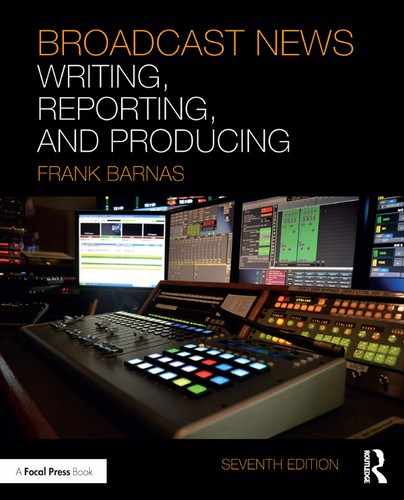CHAPTER 5
Beats, Spot News, and Reporting Assignments
CONTENTS
Key Words
Beats
Business/Consumer
Crime
Education
Entertainment
Environment
Health
Local Government
Military
Science/Technology
Sports
Spot News
Weather
INTRODUCTION
Reporters spend much of their careers covering spot news, which dominates the contents of all radio and TV newscasts. Spot news includes fires, accidents, holdups, and other incidents that occur every day, with varying frequency, in every city and town in the nation.
Chapter 2 discussed how stories are located for newscasts. Regardless of whether stories are planned, spontaneous, or enterprised, the newsroom must also decide who will cover a given assignment. In some situations, this is fairly straightforward; a basketball piece will fall to the sports reporter, whereas a medical update is given to the health reporter. This chapter covers these specializations, as beat reporters are looked on as the newsroom’s resident experts on a topic. There is also a discussion on the theories of how to cover spot news appropriately, especially those stories that may trigger an emotional response.
Further, this chapter discusses the most common types of spot news story. In a fast paced newsroom, the producer or assignment editor may have limited choices regarding who can be dispatched to a breaking story. Although it is not ideal for a business reporter to cover a crime story, it is not uncommon. The ability to cover a broad number of spot stories, in addition to having a solid background in a given beat, makes any reporter a more valuable addition to the newsroom.
BEATS
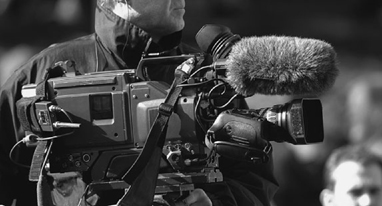
FIGURE 5.1 www.shaunl/iStockphoto.com
During their careers, reporters cover most of the types of news stories just discussed. Some reporters may have one particular type of story assigned to them as their beat. Unfortunately, not too many radio and TV newsrooms use the beat method of reporting, which was developed by—and is still a tradition at—newspapers. Most broadcast managers argue that they do not have the budgets necessary to assign reporters to beats. They note that news is only a small percentage of what is viewed on television every day, whereas newspapers devote most of their attention to it. Many people believe broadcast news suffers because it does not have enough beat reporters who can concentrate on and become an expert in a particular subject. Although you may never be a full-time beat reporter, if you are interested in a specific area such as business and consumer news, it never hurts to learn as much in that field as possible. Once you prove your knowledge in that area, the news producer will gladly assign you to the business stories that appear from time to time.
The following list of beats is not comprehensive, although they are the most likely to be found in newsrooms that still maintain specialized reporters. A rural area, for example, may have an agriculture specialist who concentrates on farmers and crops, whereas a large metro area could deploy a traffic and transportation reporter. However, the beats listed here can provide a starting point for those who wish to specialize in a given field. They are:
■ business/consumer
■ crime
■ education
■ entertainment/community
■ environment
■ health
■ local government
■ military
■ science/technology
■ sports
■ weather.
DEFINING TERM: Beat—a specific subject area in which a reporter may specialize.
Chapter 3, Developing Stories, discussed how to develop a contact list for a general assignment reporter; this broad list should include the local chamber of commerce, the city’s public information officer (PIO), and a wide variety of local contacts who can help with stories ranging from crime to sports. While beat reporters have a narrower focus, they require a deeper list of local experts to call on for their particular field. The following pages provide a glimpse of how a beat reporter can develop his or her specialization.
Business/Consumer
The business reporter uses the same basic techniques as a general assignment reporter—developing good sources and cross-checking information for reliability. Covering business is a little like covering politics. Because there’s a lot of speculation, a good reporter soon learns to be skeptical about any predictions concerning the economy, interest rates, and the stock market.
Reporters thinking about specializing in business news should remember that the opportunities are not as great as in some other beats. This is largely because local newsrooms do not normally spend as much airtime on business subjects as on other issues. This lack of coverage results partly because many news directors think that most business news is either too dull or too complicated to explain to the public. At the same time, many stations that do have business reporters say they get good feedback from the public on business news.
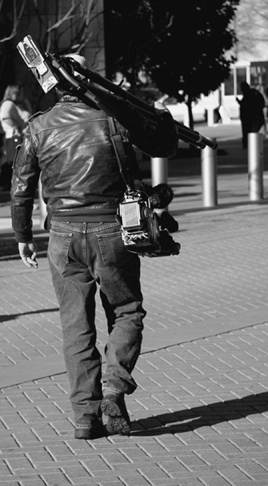
FIGURE 5.2 www.asiseeit/iStockphoto.com
WEB LINK: Nonprofit organizations are often forgotten within the business domain, but these still file Form 990 with the Internal Revenue Service. Guidestar.org provides a searchable database to research charities.
For those who think business is fascinating and would like a future in reporting such news, there are simple steps to take. Enroll in collegiate or extension courses in economics, marketing, and other business-related subjects. Frequently check websites that discuss the stock market and the economy’s impact in consumers. Most importantly, learn the basics of business vocabulary, so you can correctly speak about stocks, bonds, real-estate investments, and the like. Not only does such knowledge carry weight with news producers, it also means a lot to viewers who are concerned about their own financial situations.
As always, research is a necessity. Broadcasters specializing in business reporting should read periodicals such as Barron’s, Business Week, The Economist, Forbes, and Fortune. The Wall Street Journal is the bible for the business world. Similarly, The New York Times, The Washington Post, and their counterparts in other large cities have excellent business columns and reports that business specialists should follow.
Many good trade publications are also devoted to business and industry. Although many of these publications have biases that the reporter must consider, they should by no means be discounted. They are full of information that helps reporters learn about industries and new systems, techniques, and products.
Also, note that the business beat has gradually evolved into the business/ consumer beat, boiling down arcane financial data into information that can be used by the typical homeowner, taxpayer, and consumer. Because of this shift, there are now ample stories of clipping coupons, refinancing mortgages, paying bills, and saving money. This subtle tonal change allows business/ consumer reporters greater access to newsrooms.
Consumer reporting works best when the reporter investigates serious problems and scams that affect many people. Reporters provide a real service when they alert the audience to beware of a company that guarantees consumers credit cards for a fee and then doesn’t produce, a home siding company that’s tricking retired couples into paying double what they should to repair their homes, or a garage that charges customers for unnecessary repairs.
These reporters also provide other services to the public. They might report on new products that may be useful to the physically disabled, a new low-cost prescription service for senior citizens, or the best way to discover bargain airfares.
A sampling of their contact list would be based on some of the following:
■ banks and credit unions
■ chamber of commerce
■ city/county business license department
■ industrial authorities
■ labor unions
■ realtors.
FAST FACT: The SEC was created in the early 1930s as a reaction to the massive financial losses during the Great Depression.
Another professional strategy is to identify the top ten businesses in the area (think of large local employers) and monitor their quarterly reports and stock prices. If a company has publicly traded stock, they will appear on the U.S. Securities and Exchange Commission website, www.sec.gov, where filings by companies are kept in a searchable database called “EDGAR.”
Veteran reporters may go beyond the typical report and purchase a single share of stock. This can allow access to stockholder meetings if there is difficulty in obtaining the company’s information. Of course, the reporter should keep stock purchases limited to just one per company; if a reporter bought 100 shares of a local company’s stock and then produced glowing stories about that company, the financial payout is clearly filled with ethical and legal challenges.
Crime
Public information officers, or PIOs, are appointed within law enforcement divisions to provide a liaison between the police and the press. Maintaining a working relationship with the PIOs in your area (remember, there will be one for the city police, another for the county sheriff, and so forth) is key to covering crime. Naturally, monitoring police frequencies on the scanner, performing beat checks, and reviewing the police activity logs are also important.
The process doesn’t stop once there is an arrest. After the suspect is arrested, the local district attorney (DA) will file charges; a rookie mistake is to say that police have charged a suspect with a crime. They don’t. Remember that police arrest, the DA charges.
Because covering the courts is a specialization unto itself, the following is a brief overview of what you may expect when you’re called on to cover a courtroom case. Remember that no two courts are alike, as judges may institute gag orders or move into closed session. Also, military courts operate under a different code and typically do not allow video cameras, thus necessitating the need for a courtroom sketch artist. Juvenile courts are off-limits. The only rare exception is if the crime is particularly heinous and the judge allows you to report very broadly without identifying the suspect. Finally, despite the constitutional right of a speedy trial, the word “speedy” means dif ferent things to different people. Depositions, evidence discovery, pretrial motions, testimony, trials, and appeals can lead to endless days of courtroom tedium and possibly years of story coverage for a single case.
The following segment, Navigating the Courthouse, is reprinted with permis sion from the Student Press Law Center. The SPLC maintains an excellent web site that offers information on legal assist ance, sunshine laws, freedom of infor mation acts, and other legal issues confronting journalists.

FIGURE 5.3 Find the Student Press Law Center at www.splc.org.
Navigating the Courthouse
Where to Look
First, know your jurisdictions. State court (which may be called circuit or district or superior court) will handle almost all criminal matters, including violent or property crimes. Federal court (U.S. District Court) will handle major drug trafficking offenses and other federal crimes, like bank robbery. Each courthouse will have a criminal division clerk’s office that is the keeper of the records.
What to Look For
Search warrants are issued by judges or magistrates to authorize police to search (and confiscate evidence from) homes, businesses, or other premises that aren’t open to public foot traffic. The warrant may be sealed until the search is completed, but afterward its contents should be a public record—including the sworn statement (affidavit) made by the investigating officer to convince the judge that there was enough information to justify a search.
Indictments are the charging documents that describe the alleged crime and the laws violated. Indictments are the result of a grand jury hearing, but some criminal charges, particularly less-serious charges, originate with a more informal filing (typically called an information) by the prosecutor’s office. The judge will then hold a preliminary hearing to determine whether the information is adequate to justify holding the defendant on criminal charges.
Defense attorneys often will file pretrial motions to attempt to get certain evidence (or even the entire case) thrown out before trial. These motions are public records and should be kept on file at the Clerk’s Office under the number assigned to each criminal defendant’s case. A common pretrial motion is a motion to suppress, arguing that evidence gathered in violation of the defendant’s rights—for instance, drugs found in the defendant’s home when police searched it without getting a warrant—should be disallowed.
Who To Get To Know
The prosecutor’s office (usually known as the district attorney or solicitor) will handle the case for the government. An assistant solicitor or assistant district attorney will be assigned to each case and may be willing to talk about the charges and possible penalties.
The public defender’s office will represent criminal defendants who cannot afford a lawyer.
Judges have a staff that may include a law clerk, a calendar clerk and other assistants. They probably won’t give you quotes, but they can answer scheduling questions—“When and where is the hearing?”—and judges themselves sometimes welcome visits from reporters, especially students who are curious about the legal system.
In federal and in some state courts, cases are assigned to magistrates before they go to a judge—the magistrate may handle the initial hearing where bail is set and the charges are read. Like judges, they’ll have clerks and officers that may answer basic who/when/where questions.
Tips and Tricks
Within a day or two of arrest, the defendant will be entitled to some kind of court hearing. This may be for the purposes of setting a bond for his release from jail or simply to present him with the charges against him. Typically, there will be a follow-up hearing several days or weeks later for the defendant to enter a plea of guilty or not guilty. These preliminary hearings are open to press coverage and often are good opportunities for you to (a) find out the name and contact information of the defense lawyer and (b) get some pictures—perhaps on the way into or out of the courthouse if cameras aren’t allowed inside (see below).
Judges can almost never close a trial (or even pretrial proceedings) to the public; there is a First Amendment right of access for the media to attend the key proceedings in a criminal case. If a judge tries to exclude you, respectfully and politely identify yourself and your media outlet. Then, ask for a brief recess so you can contact legal counsel.
If you’re going to cover a criminal trial, get the ground rules first. Most states do not categorically ban photography in state courts, but photographers should check with the judge’s office in advance (and with the sheriff’s deputies who control courthouse security, so that the camera doesn’t end up confiscated at the door). The same goes for anyone planning to use an electronic device for live blogging or social media posting during a court proceeding. There is no settled consensus on the ability to post real-time updates from the courtroom, but some technology-friendly judges have accommodated it, particularly in cases of great public interest.
There may be limited camera positions, a “pool” arrangement, or other restrictions. Cameras aren’t allowed in federal courts. This may also affect your coverage plans—if you’re planning to live blog the trial, make sure your communications device will get past courthouse security.
If you attend a trial, steer clear of talking—even elevator chat—with (or in front of) jurors. Judges are very protective of their jurors and, during trial, they’re off-limits. After trial, you are free to attempt to contact them, and jurors have sometimes given the media interesting insights into what evidence was and was not convincing.
After trial, the district attorney’s file may be obtainable by way of an open records request. Documents being used in an ongoing criminal prosecution may be exempted from your state’s open records law, but once the case is closed, there is no “ongoing” prosecution.
Reporter access
Some courts allow reporters with cameras and tape recorders to question lawyers, prosecutors, defendants, and others in the corridors, whereas others restrict the media to remaining outside the courthouse.
Good reporters attend the court hearings and trials even if the equipment is barred. They take detailed notes on what goes on for use in their reports. The reporter not only looks for important remarks and choice quotes from the judge, prosecutor, defense counsel, and witnesses but also makes note of facial expressions and other signs of emotion. If it’s a jury trial, the reactions of the jury members are particularly important because they may give some clue about how the case is going.
When cameras are not allowed in the court during an important case, an artist is usually assigned along with the reporter to render sketches of the principal figures.
Civil courts
When people believe that they have been damaged in one way or another by individuals, professionals, or companies, they may seek redress by suing in civil court. The suit may be for libel, malpractice, failure to live up to a contract or to pay a bill, or divorce (just to name a few). The loser in civil court usually ends up paying money. No one goes to jail as they once did when debtor prisons existed. But refusal to pay court-ordered alimony or child support is considered contempt of court, which could put the guilty party in jail.
Radio and TV newsrooms do not assign reporters to civil court trials because most of the cases are dull and relatively unimportant. But an unusual malpractice case involving millions of dollars or a class action suit against an automobile company for allegedly building an unsafe vehicle attracts broadcast media to the courthouse. Reporters also cover civil cases when celebrities are seeking damages for libel or are involved in a scandalous divorce or paternity suit.
As far as reporting assignments go, the rules are the same as those for covering the criminal courts. Attend the hearings and trials, take notes (particularly if you can’t use equipment inside), and try to speak with both sides outside the courthouse.
To cover crime efficiently, some of the basic contacts needed include:
■ Bureau of Justice statistics (www.bjs.gov)
■ city police’s PIO
■ civil and criminal court clerks (for obtaining dockets of cases to be tried)
■ county sheriff’s PIO
■ district attorney’s office
■ Federal Bureau of Investigation (www.fbi.gov) as well as your state’s Bureau of Investigation
■ State Highway Patrol.
Also, the Census Bureau at www.census.gov links to the Federal Statistical Abstract, which provides searchable statistics on crime.
Education
Reporters within the education beat have a wealth of information at their fingertips on an ongoing basis, as teachers, admin istrators, state review boards, principals, and a score of other stakeholders generate reports at a nonstop clip. The downside is that the journalist must pore over piles of documents that correspond to annual (January to December), academic (August to May), and fiscal (July to June) calendars, as well as keep up with an ever chang ing list of personalities.
Done correctly, the education beat can become one of the pillars of the newscast. Done poorly, the beat will drown in missed opportunities and forget table stories.

Name—Jade Bulecza
Job Title—Anchor and Reporter
Employer and Website—WCTV, Tallahassee, FL; wctv.tv
Social Media Outlets I Use— Facebook, Instagram, Twitter
Typical Daily Duties—I can’t really say I have an average day. I anchor the 5pm newscast Monday–Friday. Prior to the newscast, I’ll go out on a story solo. That means shooting, writing, and editing my own material. The story might be a hard news story or a feature.
The day begins with a morning meeting where producers, anchors, and reporters bring their story ideas. From there, the assignment desk editor and producers decide what they want and then reporters go out and get the stories. Sometimes anchors will go live for the newscasts and not anchor. It all depends on what’s happening that day. Sometimes I fill in and co–anchor on the 6pm newscast.
I also work on franchise pieces on days when I’m not reporting. I have a weekly arts segment where I interview people in the community in studio, plus I have another segment where I interview law enforcement on safety tips for the community. Then I’m also part of an investigative team. The list goes on and on! It’s a fun job. I’m never bored.
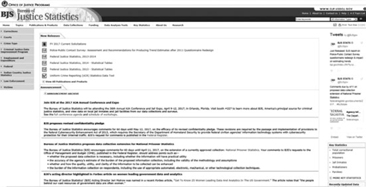
FIGURE 5.4 Screenshot of www.bjs.gov homepage
The following list is a good starting point for compiling a contact list:
■ board of education (and superintendent)
■ colleges and universities
■ libraries
■ homeschool advocacy groups
■ private schools
■ public schools
■ teachers’ unions
■ vocational–technical schools.

FIGURE 5.5 www.racorn/Shutterstock.com
Entertainment/ Community
With the exception of a handful of large markets such as New York and Los Angeles, it is extremely difficult for a newsroom to justify an enter tainment reporter. Most reporters don’t live in metro areas packed with television stars, movie studios, recording artists, and red carpet debuts of feature films.
Instead, a reporter can carve out a niche as an entertainment/commu nity reporter, thus concentrating their efforts on filing feature stories for the E block, where the kickers are slated.
DEFINING TERM: Kicker—a feel-good feature story placed at the end of the newscast to leave viewers in a good mood and to serve as a springboard into the next program.
FAST FACT: CNN Newsource, an online video newsfeed, allows producers to search specifically for kickers to end their newscasts.
No producer wants to end a newscast on a down note about a double murder, only to then ask the anchors to gleefully promote Wheel of Fortune, The Tonight Show, or whatever light-hearted fare follows on the channel.
Thus, a strong E block is an integral part of any local newscast. Even though the stories may not have the hard-hitting news impact of an A-block crime report, journalists should still dedicate their best efforts to compiling a solid contact list. Some basics include:
■ amusement parks
■ art galleries
■ comedy clubs
■ conference centers
■ dance schools
■ historic districts
■ movie theaters
■ museums
■ parks department (administered by the city or county)
■ playhouses and stage theaters.
There are two distinct disadvantages to being an entertainment/community reporter. First, every local civic group, proud parent, bake sale sponsor, and wannabe actor will expect a fawning story; the list of demands can become unwieldy, the reports are expected to be universally glowing, and each story subject may very well expect a video copy for their own. Second, E-block reporters will quickly develop a reputation as someone who can only produce a puff piece at the end of the show. While there is merit to having a strong E block, the day will inevitably come when a “hard news” story, such as a deadly car crash or blazing fire,will demand coverage in a short-staffed newsroom. Even when such a crisis occurs, producers are leery of sending an entertainment reporter to file a critical report.
Environment
The growing concern for the environment in the past decade has encouraged broadcast news managers to allocate more news to the subject. In many newsrooms, the environment is still covered by general assignment reporters, but more and more news managers are hiring broadcast journalists who have become familiar with environmental problems. Knowledge of the subject can be acquired in college, but reporters often gain their expertise simply by taking the time to learn about the complex issues.
FAST FACT: The Society of Environmental Journalists at www.sej.org provides publications, grants, and extensive resources for those reporting on the environment.
Numerous periodicals deal with every aspect of the environment, and reporters intent on learning about environmental issues should spend many hours in the library reading these publications or should subscribe to them. A wide variety of environmental seminars also are offered throughout the country by private and government groups. The Environmental Health Center issues a newsletter; “Greenwire” is a news service offering stories about the environment; and the Society of Environmental Journalists provides help and resources for journalists trying to improve their knowledge of environmental issues. The Radio and Television Digital News Association (RTDNA) often discusses the environment at national and regional meetings. Helpful computer databases, such as the Toxic Release Inventory, which stores information on 366 toxic chemicals, are also available.
In addition to these sources, environmental stories thrive online with numerous websites dedicated to climate change, biodiversity, pollution, recycling, and assorted environmental issues. As a starting point, the following contacts should be collated:
■ civic groups that sponsor clean-ups (Boy Scouts, Keep America Beautiful)
■ Department of Natural Resources (or its equivalent in your state government)
■ dumps and landfills
■ Environmental Protection Agency (www.epa.gov)
■ municipal sewage, refuse, and water departments
■ National Resources Defense Council (www.nrdc.org)
■ recycling organizations
■ Sierra Club (local chapters are listed at www.sierraclub.org/chapters).
Health
Health and medical subjects rank high in interest among radio and TV audiences for obvious reasons—we all want to remain healthy. Reporters with knowledge of health and medical issues are assets to news managers. Most large news staffs have someone assigned to a medical and health beat. Many broadcast news pro ducers regularly include health and medical stories in newscasts. Reporters do not have much trouble selling producers on a good medical story. Likewise, depend ing on the size of the market, good health and medical stories are usually not difficult to find.
Because they are public relations conscious, hospitals and research centers often bring stories involving their facilities or research to the atten tion of radio and TV news rooms. Listeners and viewers also provide tips on medicine-related stories, usually when someone close to them has been involved in some thing good or bad at a medical facility. Many tips concern malprac tice, but some involve life saving techniques and appealinghuman-interest stories about chil dren wait ing for organ transplants and the generosity of people who contri bute hundreds of thousands of dollars to make the surgery possible.
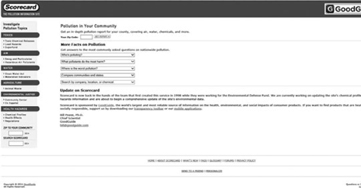
FIGURE 5.6 Find pollution information at www.scorecard.goodguide.com.
Objectivity is always an essential part of all reporting, but sometimes medical reporters must be partic ularly sensitive about their reports because providers often appear to be in the wrong. Doctors are accused of charging too much or refusing to accept Medicaid patients. Hospitals are criticized for turning away some patients and price gouging others. Many of these stories are true, but reporters must examine both sides of any issue. Reporters sometimes discover that hospitals are on the verge of financial collapse because of rising costs and heavy investment in equip ment. They find that the government is slow in paying Medicare patients’ bills and is often unrealistic when decid ing on the amount doctors can charge.

FIGURE 5.7 Screenshot of www.epa.gov homepage
Good medical reporters look for positive stories about doctors and hospitals to balance the negative ones. If and when reporters find they are beginning to dislike the medical profession as a whole, it’s probably time for them to start looking for another beat. Health and medical reporters also cannot allow them selves to be duped. They must constantly ask tough questions about the medical establishment and whether it is meet ing the needs of the American people.
Science and health-related courses in college help journalism students prepare for medical reporting. These students also should read the many health and medical magazines that are available. Teaching hospital libraries also have stacks of journals from major research centers. Although these resources are provided primarily for medical students, persuasive reporters usu ally have no difficulty gaining access to the journals once the staff is convinced the reporters are not malpractice attorneys.
Additionally, an excellent online resource is the Association of Health Care Journalists (AHCJ), which offers information including health news, tip sheets, and countless articles. Even more unique, the AHCJ hosts a section dedicated to career development. It lists jobs, fellowships, internships, and even a directory of independent health journalists.
In addition to joining this group, compiling a basic contact list should include the following starting points:
■ hospitals
■ local and/or regional health departments
■ the Centers for Disease Control and Prevention
■ local nonprofit chapters that specialize in health, such as the American Red Cross, the American Cancer Society, or the National Kidney Foundation
■ regional universities and colleges that offer studies in medical care, nursing, or any other health-related fields
■ PubMed, which is a database of more than 25 million citations from science journals and online books (http://www.ncbi.nlm.nih.gov/pubmed).
It is also prudent to compile a list of local specialists, such as a pediatrician, an allergist, a dentist, and one or two experts in their fields. They can provide an abundance of specialized information, but beware that you do not call on them too frequently; using the same doctor on the air month after month smacks of both favoritism and laziness. To obtain a list of licensed doctors in your area, find your state’s licensing board for medical practitioners. Doctors must be licensed to prac tice medicine, thus there is a paper trail available to track them down.
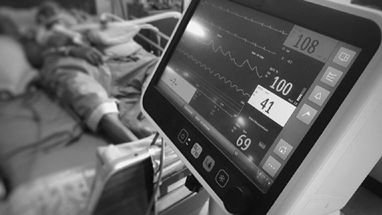
FIGURE 5.8 www.mister_Art/Shutterstock.com
Local Government
Notice that the emphasis on this beat is for local government. Unless a reporter lives in a state capital or Washington, DC, covering politics tends to focus on those juris dictions within the viewing area. Of course, there are always national bills and laws that impact local viewers; the best website for tracking that activity is www.congress.gov. Additionally, knowledge of state government is vital, as a reporter will interact with the governor’s office, state representatives, and state agencies such as transportation and health.
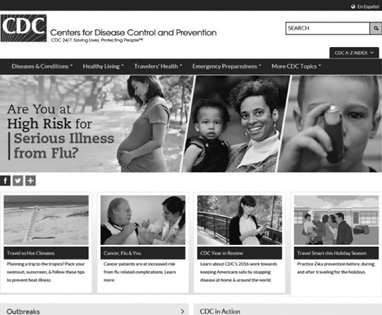
FIGURE 5.9 Screenshot of www.cdc.gov homepage
There are also ample stories to be covered at the local level, spanning city council meetings to planning and zoning public forums. Indeed, if the city’s television station does not cover the working of the city council, who could argue that the public need for news is being addressed?
Like a police station, most municipalities have a PIO who interacts with the media. The PIO may serve as the default on-camera interview subject or may coordinate availability for city leaders to meet with the press. In addition to the local PIO, other useful contacts with local government include:
■ advisory boards
■ city council
■ county commission
■ planning and zoning commission.
Additionally, the local government may have oversight regarding the airport, the animal shelter, and a host of other entities. If the government provides a budget or personnel, expect that agency to fall under this beat’s responsibilities.
Military
Of all of the beats listed, the restrictions placed on military reporters make it the most difficult to cover. The personnel involved are extremely limited in what they can say on camera; even a military base’s PIO may not be able to say much. Also, if reporters have limited military knowledge, their civilian background will hamper their reporting. After all, why should a serviceman trust a reporter who can’t even tell the differ-ence between a lieutenant and a sergeant?

FIGURE 5.10 www.jcarillet/iStockphoto.com
In addition to the following sources listed, some stories may be found at local businesses that serve mili tary personnel. If the base is closing or the soldiers are being deployed, the businesses suffer. Conversely, when the soldiers come home, those shops and restaurants are among the first to benefit. For starters, the military contact list should include:
■ collegiate ROTC groups
■ military bases’ PIOs
■ National Guard units
■ recruiting offices
■ veterans’ groups.
The Department of Defense’s official website, www.defense.gov, provides a wealth of data sources. It is also a good idea to bookmark the branch of the military that impacts your area. For example, if you have an Air Force base in your region, you should add both www.af.mil and the base’s individual website to your list.
One wrinkle in covering these stories is when the military allows a reporter to be embedded into a field unit. This is not a casual relationship. It takes weeks (sometimes months) of coordination between the newsroom and the military unit, plus the Pentagon or Defense Department will have input. Embedded journalists gain a unique, first-hand experience in seeing what conditions are faced by the troops on the ground, even though they are limited in what they can say on air. For example, the reporter obviously cannot broadcast specific positions or attack plans. But if embedded relationships are treated with respect, the end result is a powerful experience for the viewer at home.
Science/Technology
Science and technology are both broad categories, spanning fields ranging from astronomy to zoology. Most reporters specialize in technological advances that impact consumers directly. Because cell phones, high-definition television, and computer software stories evolve on an almost daily basis, there is ample opportunity for reporters who can keep up. One successful nationally syndicated radio program, The Kim Komando Show, thrives on such technological stories.
There are ample resources for science and technology writers online. An excellent resource is the National Association of Science Writers, which offers discussion boards, publications, articles, and a number of events at its website www.nasw.org.
While gathering national resources for science and technology is comparatively easy, it gets tougher at the local level. The greatest challenge with developing a list of nearby contacts is that many will be vendors of specific products. For example, because those most knowledgeable about cell phones will likely be those who sell the phones, the stories can quickly become nothing more than thinly cloaked advertisements for one product over another.
One good starting point would be a local university, where the faculty will have specialized training in the technological fields and can give impartial interviews. Otherwise, proceed very cautiously, lest you become a cheerleader for one store or another.
Sports
Covering sports is the same as covering any other beat, except that viewers have come to expect it in their nightly newscasts; there may very well be a newscast without a health story, but sports never gets a day off. Sports reporters must have an in-depth knowledge of all local sports teams, rivalries, star players, coaches, playing venues, and countless other details to make their reports better than competing sportscasts. Additionally, they’re expected to know about national teams who represent the region in the NFL, NBA, MLB, and NHL.
Many people are attracted to broadcast sports reporting because of their interest in sports and because they think it’s more fun than covering city council meetings. The problem is that so many beginners have the same idea that not enough opportunities are available to provide jobs for them all. TV stations that may have six or more general assignment reporters usually have only one full-time sports reporter-anchor.
FAST FACT: Kim Komando graduated high school at age 16 and Arizona State University at age 20.
FAST FACT: The NFL is a nonprofit organization. It files 501(c)(6) forms because it is exempt from some federal income taxes.
Sports reporting also requires some additional skills that general reporting does not. Personality has become important; knowing sports inside out is not enough anymore. Most news managers look for sports people who can attract an audience with their style of delivery. Training at the collegiate level is also required, as covering the local team demonstrates a commitment to the field.
Good organizational skills also are important. Sports reporters, particularly in small markets, are expected to cover local games and to be able to cut a lot of video quickly from a variety of sports contests that are being recorded throughout the evening. Sports seasons tend to overlap, which means that college and professional football and basketball games are often held at the same times as professional hockey matches, amid a variety of other sports. Many stations also cover high school sports. Collecting all this information and cutting video of all these activities is demanding.
How does a journalism student prepare for a sports reporting job? The best way is probably through an internship. Sports reporters look for sharp college students who know sports and know how to edit video. Quick learners may find that they soon cover high school games and even anchor on the weekends. Because most sports anchors, like news anchors, are looking for opportunities in larger markets, frequent turnovers sometimes occur at the sports desk. The weekend sports person who learns the job well sometimes gets the sports anchoring job during the week.
Sports anchors with a lot of talent and personality can demand good salaries in large markets. Like other anchors, they often are subject to the ratings and whims of management. Job security is less certain for sports anchors than it is for most beat and general assignment reporters.
To strengthen their reporting skills, sports journalists should be more than mere spectators who report scores; they should study their craft and network with others on a national scale. Organizations such as the Associated Press Sports Editors sponsor conferences, host contests, and even maintain a jobs and internship section on their website.

FIGURE 5.11 www.Vlad1988/Shutterstock.com
Sports reporters have possibly the easiest list of contacts to compile, especially since all professional teams (as well as most universities) have a sports information director (SID) who serves as a gateway to stories. In addition to these SIDs, the basics of a contact list should include the coaches and star athletes from:
■ local high school teams
■ regional university teams
■ regional and state professional teams
■ stadium and arena officials.
Weather
While none of the previously listed beats requires formal training, weather is its own special niche that has a certifying association. The American Meteorological Society (AMS) oversees a Certified Broadcast Meteorologist (CBM) program. This certification means the holder has both the experience and the educational background necessary to accurately provide weather information to a viewing audience. The AMS previously sponsored a Seal of Approval program, although that was discontinued in 2008.
The current CBM certification is not something to be entered into lightly. Successful applicants must hold a bachelor’s degree in atmospheric science, pass an AMS test, and provide a DVD of their weathercasts to the Board of Broadcast Meteorology for review. There is also a fee for the testing: $300 for AMS members and $600 for nonmembers.
Of course, AMS certification is not required to provide the weather outlook to the audience. Those who do not pass the certification go by the title “weatherman,” whereas those who have passed the AMS criteria may call themselves “broadcast meteorologists.”
The skillset for the weatherman in the newsroom is specialized. Station managers look for personality along with a knowledge of maps, computers, and chroma-key technology. The auditions for weather anchors are considerably different from auditions for beat reporters. Although the news director looks for good writing and reporting skills, the general manager looks for a great smile and a quick wit.
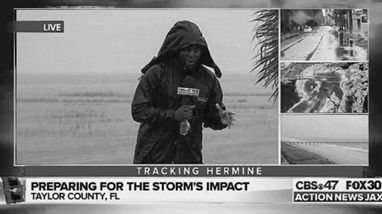
FIGURE 5.12
Websites for those giving weather information are fairly limited, although they can be expanded by adding local farmers, pilots, or others who are directly impacted by the weather. The usual Internet bookmarks are:
■ the American Meteorological Society
■ the National Weather Service.
It should be noted that most newsrooms have dedicated software for designing weather maps and forecasts; these may also be linked to sources for accurate weather information.
SPOT NEWS
Chapter 2, Locating News, discussed spot (spontaneous) news as it relates to traffic accidents, crimes, and breaking stories. Some of these stories, such as the burning of a vacant house, are comparatively simple to cover; a fire blazes, the firefighters arrive, the blaze is extinguished, and there is an investigation over whether the cause was arson. Other stories, such as riots or disasters, have far deeper consequences, impact many more people, and can endanger the reporting crew. For this reason, we’ll outline typical spot news scenarios that a reporter may face.
Accidents
Accidents are another common type of spot news stories. Reporters cover a variety of accidents during their careers. When people talk of accidents, they tend to mean traffic accidents, which certainly do provide a lot of news. But many other accidents occupy a reporter’s time as well: Trains jump tracks, cranes fall at construction sites, children fall out of windows, small planes collide, and buildings collapse. Most of the time, such accidents—and many others— require reporter coverage.
Traffic accidents get the most attention even when they do not result in deaths or injuries. A chain-like collision involving a dozen or more cars on a snow-covered major highway is certain to attract reporters. Radio reporters know that drive-time audiences will be interested because of the effect such a pile-up may have on getting to and from work, and TV reporters and crews want to be at the scene for pictures and interview possibilities. TV audiences, at least in the minds of news directors and assignment editors, are fascinated by the sight of a dozen cars wrecked on a highway. Fortunately, most of those chain-like accidents produce more totaled cars than deaths and injuries.
Other accidents involve airplanes, trains, or other forms of mass transit, but these occur with less frequency. In addition to covering the actual accident, reporters should bookmark relevant websites for background information. For example, the National Transportation Safety Board’s website at www.ntsb.gov provides information for aviation, highway, marine, pipeline and hazardous materials, railroad, and transportation disaster assistance.
Crime
Depending on the size of the city or town, reporters spend a lot of time covering crime. Wherever police turn out at gang battles, homicides, drug busts, and numerous other criminal activities, you will find reporters and cameras. The crime that gets the most coverage is homicide. Americans kill one another more than people in any other country, and most of the killings will be reported on radio and TV. Reporters working nights in a large city often get “burned out” covering murders night after night. The scripts all tend to sound alike after a while. Reporters talk to police in an effort to find out what happened and, more often than not, the word drugs is in the sound bite. There is sound and video of crying relatives, questions to witnesses, and shots of the body bags.
Crimes other than murder are also news. The decision whether to cover other crimes, such as holdups and gang battles, depends mainly on the circumstances. In a large city, a holdup would warrant a reporter only if people were seriously injured or taken hostage. In a small community, even an injury-free holdup of a convenience store might attract a broadcast reporter to the scene.
It may sound obvious, but reporters must remember that a person charged with a crime is considered innocent until proved guilty. Police arrest a suspect, the district attorney files a charge, and then it’s up to a judge or jury to decide whether someone is guilty or not guilty. It is important to remember that many accused people walk out of court free.
Before the courts reach a verdict, a reporter must always say the defendant is “accused of” or “charged with.” A reporter must never take on face value what a police officer or detective says at the scene of a crime. A reporter may be told that Kelly Hammer was stopped in his car and a pound of heroin was found in the trunk. It is irresponsible reporting to go on the air and say: “Police find a pound of heroin in a Springfield man’s car trunk. Details in a moment.”
The words “police say” or “the district attorney charges” are critical, even in a headline. If Hammer is innocent, the station can expect to receive a lawsuit alleging slander. If Hammer is proved guilty, the defending attorney can file for a mistrial, as the station’s newscast may have tainted the jury pool. Given these two outcomes, the reporter must ensure that the defendant is treated fairly in any broadcast about a crime.
Demonstrations
The right to demonstrate is a freedom enjoyed by all Americans, and hundreds of thousands of us (maybe more) take advantage of this freedom each year. Radio and TV reporters do not cover every demonstration, but if the organizers know their business, they can almost always orchestrate a demonstration to guarantee media coverage. Regardless of the nature of the demonstration, the primary responsibility of the reporter is to avoid being “used.”
In recent years, demonstrations from groups like Black Lives Matter and the Tea Party have brought out protestors on both sides of the political aisle. Because the picture and sound possibilities are always good at such demonstrations, a high percentage of them get radio and TV coverage.
Reporters cannot allow themselves to get caught up in this frenzy. Once the media arrive at the scene, the crowd gets louder and more agitated; the arrival of the TV cameras brings the noise to a peak. If you see this happening, wait until the crowd gets back to normal. Turning the camera off and moving away from the crowd for a few minutes is often effective.
The reporter should find a spokesperson in the group and get a statement. It is not the reporter’s role to debate the merits of the controversy with the individual. In a demonstration involving a specific facility (such as an abortion clinic), the reporter should also try to talk with someone inside.
Often, both sides show up at the same site, which makes the reporter’s job of being fair even easier. Remember that regardless of what the demonstration is about, the reporter must always get the views of both sides.
Disasters
Some reporters never experience a disaster, but those reporters working in tornado or hurricane areas and in cities with major airports will probably cover one eventually. The horror of disasters creates an emotional and trying experience for reporters.
Although it’s often difficult, reporters covering a disaster must get the facts straight. That may sound obvious, but because of the magnitude of a disaster, a lot of confusion ensues. Because so many residents, witnesses, government officials, law enforcement personnel, and various people will want to talk to the press, it is often difficult to tell which version of a story is accurate. A reporter must check and double-check all information. If something sounds suspicious, it should be reported with specific attribution. If there are two versions of casualty figures, for example, the reporter should give both figures (with attribution) and advise the audience of the discrepancy. This approach is better than trying to guess which figures are accurate and running the risk of having to make a correction later. The key point: When in doubt, be cautious.
Fires
The decision regarding whether to cover a fire usually is based on the amount of destruction it is causing. Sometimes a relatively small fire can have tragic results if it occurs in an occupied house, particularly in the middle of the night when people are asleep.
These considerations are on the news director’s or assignment editor’s mind when news of a fire first breaks. In a large city such as New York, there would not be enough reporters to cover other news if reporters were assigned to every fire. There are just too many of them. A cameraperson may be sent to cover a burning, empty warehouse, and the video may provide 20 seconds of footage on the 6 o’clock news. In the same city, such a fire may not even be mentioned on radio newscasts unless the blaze lasted for hours or caused some tie-up in traffic or injuries to firefighters. In a small town, a fire of any kind may be a major story and may need a reporter at the scene. A fire in a residential area is almost always news, regardless of the size of the community, once it has been determined that the dwelling is occupied and lives are in jeopardy.
Once at the scene, the radio and TV reporters look for the same kind of information: Have any injuries or deaths occurred? Are any people in the building? If it’s an industrial building, what is burning? Is the material hazardous? How many firefighters and pieces of equipment are at the scene? How did the fire start? Finally, is arson suspected? Reporters get most of this information from the fire official in charge.
The radio and TV reporters at the fire scene also look for other people to interview—those who escaped from the building, those who might have seen the fire start, or, in the case of fatalities, friends or relatives of those who died in the building. The radio reporter also records the natural sound of the fire and the battle to put it out, and the TV videographer does the same on video.
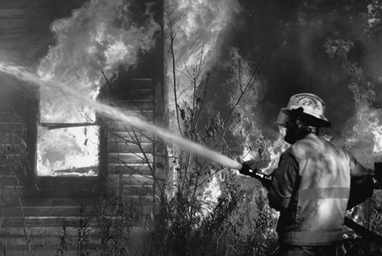
FIGURE 5.13 Ronald www.Caswell/Shutterstock.com
Rape
This is one of the most controversial crimes that appears in newsrooms as a potential story. Some question the fairness of naming the alleged rapist but not the victim. In the courtroom, one law says a defendant’s sexual history is typically considered to be valuable information and should be presented to a jury. The other “rape shield” law says the defense has to prove an alleged victim’s sexual history is relevant in order to present it to the jurors.
Rape and sexual assault are common in the United States. Rape can be measured by counting the victims or the assailants and by calculating the financial impact or the emotional devastation. This may be the occasion to document exactly how common rape is and to explore the toll the phenomenon is exacting.
Finally, reporters should dedicate themselves to reporting on the judicial process. Recognizing the different stigma that comes with being falsely charged with rape, journalists should strive for balance and accuracy in stories about cases where the court system has yet to determine guilt or innocence.
Ultimately, stand for the principles of a noble profession rather than racing your competitors to the depths of an anything-goes-as-long-as-it-sells contest. There is still no justification for journalists to deviate from the standard practice of granting a woman anonymity along with millions of other rape victims.
Riots
Demonstrations sometimes get out of hand and turn into riots. And sometimes riots just break out on their own—in prisons, among workers involved in a strike, or on city streets following a racial incident. The most important guideline is that reporters should never put themselves or their crew in unnecessary danger. It is impossible to determine, or even guess, what an unruly mob will do, and it could just as easily as not turn its anger on the media.
Nighttime is particularly dangerous. Camera lights invite trouble, and most news directors tell their crews not to use them. Today’s cameras do a credible job with just streetlights. News managers suggest that crews use telephoto lenses if the situation shows the least sign of becoming dangerous. Helicopters have eliminated some of the danger from covering potentially explosive situations.
Tragedies
A tragedy is a form of disaster but on a smaller scale. For the friends and relatives of a couple and five children who were killed in a fire, the event is no less a disaster. For reporters, tragedies are often more difficult to cover than full-blown disasters because they become more personal. Regardless of how tough a reporter thinks he or she is, the sight of five small body bags being removed from a burned-out building has a strong emotional impact. Reporters can cry, and sometimes do, alone. They must report such stories as dispassionately as possible and move on to the next one. For some, the emotion is too strong; more than a few reporters quit as a result.
Guidelines for Covering Violent Stories
It sometimes seems as though violence is an inescapable part of our lives. In one form or another, violence touches millions of Americans each year. Even those who escape such horror often know some friend or relative who is a victim of it.
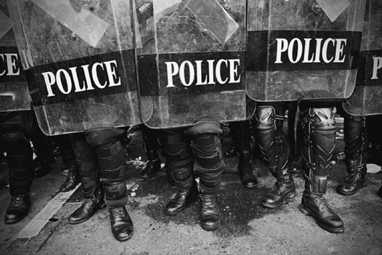
FIGURE 5.14 1000 www.Words/Shutterstock.com
There have been many reports about violence and television, and sometimes it seems as if the two words are synonymous. The debate about too much violence on TV has been continuing for decades. Although most of it deals with violent entertainment and the impact such programs have on children, there is great concern among journalists and non-journalists that television news also shows too much violence.
News directors defensively point to society and argue, as we pointed out earlier, that the world is violent and journalists are just reporting what is going on. Much of that argument is valid, but critics maintain that too much emphasis is placed on violence in the news and that it is not necessary to report every violent incident, as it sometimes appears to TV viewers.
News directors counter that they do not cover all violence, and if they did, there would not be enough room in the 30-minute newscast to cover any other news. This discussion examines the problem of violence in the news and how journalists try to deal with it—not only the reporting of it but also how they handle the often gruesome details of the crime, those who commit the violence, and the often forgotten victims.
SUMMARY
Most reporting jobs in radio and television are general assignment positions. Reporters with these jobs cover everything they are told to cover, but most of their stories are spot news stories. Spot news deals with everyday breaking stories—fires, accidents, crimes, disasters, and so on.
Some stations and the networks assign beat reporters to cover specific topics, such as entertainment, education, and health. The burden on these reporters is that they must justify their existence with every newscast, unearthing stories in their area that are relevant enough to earn a spot in the news rundown.
Of course, a reporter can try for the best of both worlds: Have the competence to cover a spot news story while also being the “go-to” reporter for a beat such as education or local government. This can be difficult to pull off well (nobody wants to see the sports reporter at the scene of a double homicide) but reporters who are adept at producing stories may find themselves as an invaluable part of the news team.
Test Your Knowledge
1. What are spot news stories? Give some examples.
2. What factors are considered when deciding to cover a crime or a fire?
3. Journalists must be especially careful with stories about defendants in a criminal case. How is that done?
4. What are some of the advantages and disadvantages of having beat reporters in a newsroom?
5. Out of the beats listed in this chapter, which one do you think would be the easiest to cover in your market? Which would be the hardest? Why?
6. How many local sports teams are in your area? Do you also know the names of their coaches and star athletes?
EXERCISES
1. Arrange with a news director or assignment editor to follow a reporter when he or she is assigned to a breaking news story. Report on what happened at the scene and how the reporter covered the story.
2. Monitor a local TV newscast and see how many spot news stories were reported. What other types of story were in the newscast?
3. Watch a week of TV newscasts on the same channel and identify which reporters have a beat, such as health, education, or local government.
4. Pick a beat and create a local database of news sources. Expect to compile a list of at least ten names, complete with phone numbers and email addresses.
5. Focus on one spot news story, such as a fire or crime, which has received both television and newspaper coverage. Analyze how the two media varied in their coverage of the same event.
